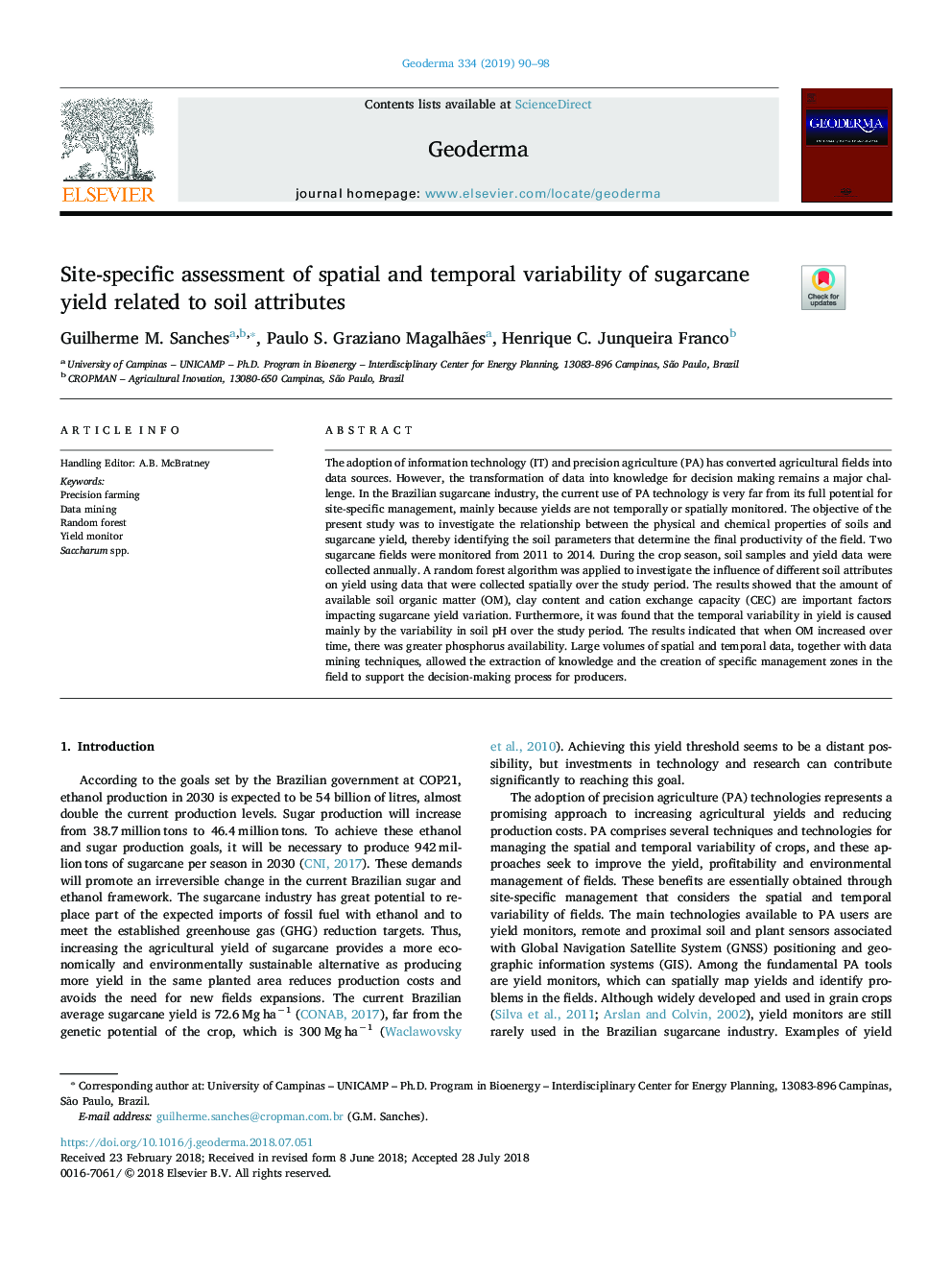| Article ID | Journal | Published Year | Pages | File Type |
|---|---|---|---|---|
| 8893821 | Geoderma | 2019 | 9 Pages |
Abstract
The adoption of information technology (IT) and precision agriculture (PA) has converted agricultural fields into data sources. However, the transformation of data into knowledge for decision making remains a major challenge. In the Brazilian sugarcane industry, the current use of PA technology is very far from its full potential for site-specific management, mainly because yields are not temporally or spatially monitored. The objective of the present study was to investigate the relationship between the physical and chemical properties of soils and sugarcane yield, thereby identifying the soil parameters that determine the final productivity of the field. Two sugarcane fields were monitored from 2011 to 2014. During the crop season, soil samples and yield data were collected annually. A random forest algorithm was applied to investigate the influence of different soil attributes on yield using data that were collected spatially over the study period. The results showed that the amount of available soil organic matter (OM), clay content and cation exchange capacity (CEC) are important factors impacting sugarcane yield variation. Furthermore, it was found that the temporal variability in yield is caused mainly by the variability in soil pH over the study period. The results indicated that when OM increased over time, there was greater phosphorus availability. Large volumes of spatial and temporal data, together with data mining techniques, allowed the extraction of knowledge and the creation of specific management zones in the field to support the decision-making process for producers.
Related Topics
Physical Sciences and Engineering
Earth and Planetary Sciences
Earth-Surface Processes
Authors
Guilherme M. Sanches, Paulo S. Graziano Magalhães, Henrique C. Junqueira Franco,
